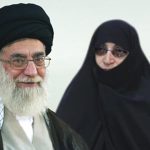The position of Supreme Leader in Iran is one of immense power and influence, serving as the highest authority in the country. However, the question of how this leader can be removed is complex and steeped in the political and religious fabric of the Islamic Republic. This article explores the mechanisms for removing the Supreme Leader, the historical context, and the implications of such a removal.
The Constitutional Framework
The Iranian Constitution outlines the role and powers of the Supreme Leader, also known as the “Rahbar.” According to Article 111, the Assembly of Experts has the authority to dismiss the Supreme Leader if he is deemed unfit for office due to reasons such as incompetence, inability to perform his duties, or loss of qualifications. This assembly is composed of elected clerics who are responsible for overseeing the leader’s performance and ensuring he adheres to the principles of the Islamic Revolution.
However, the process of removal is not straightforward. The Assembly of Experts itself is influenced by the political landscape and the prevailing power dynamics within Iran. In practice, this means that the removal of a Supreme Leader is a rare occurrence, as the political elite often rally around maintaining the status quo.
Historical Precedents
Historically, there has been only one instance of a Supreme Leader being removed. Ayatollah Ruhollah Khomeini, the founder of the Islamic Republic, held the position from 1979 until his death in 1989. His successor, Ayatollah Ali Khamenei, has been in power since then, and there has been no successful removal of a Supreme Leader since Khomeini’s passing. This historical context underscores the challenges associated with the removal process and the deep-rooted loyalty that often exists among political and religious leaders in Iran.
The political climate in Iran has also contributed to the stability of the Supreme Leader’s position. Even amidst widespread protests and calls for reform, the mechanisms for change are often stifled by the existing power structures. For instance, during the protests following the 2009 presidential elections, calls for the removal of Khamenei were met with crackdowns and repression, demonstrating the lengths to which the regime will go to maintain control.
The Role of the Assembly of Experts
The Assembly of Experts plays a crucial role in the potential removal of the Supreme Leader. This body is tasked with evaluating the leader’s performance and has the constitutional authority to dismiss him. However, the assembly itself is composed of individuals who are often aligned with the prevailing political ideology, making it unlikely that they would act against the Supreme Leader without significant cause.
In recent years, discussions about the future of the Supreme Leadership have gained traction, particularly in light of Khamenei’s advancing age and health concerns. Speculation about succession and potential candidates has become a topic of interest among political analysts and the public alike. However, any move towards removal would require a significant shift in the political landscape, which is currently dominated by hardline factions loyal to Khamenei.
Implications of Removal
The removal of a Supreme Leader would have profound implications for Iran’s political landscape. It could lead to a power vacuum, resulting in internal conflict among various factions vying for control. Additionally, the process of selecting a new leader would be fraught with challenges, as the Assembly of Experts would need to navigate the competing interests of various political and religious groups.
Moreover, the removal of the Supreme Leader could embolden reformist movements within Iran, potentially leading to calls for broader political changes. However, it could also provoke a backlash from hardliners who may view such a change as a threat to the Islamic Republic’s foundational principles.
In conclusion, while the mechanisms for removing the Supreme Leader of Iran exist within the constitutional framework, the practical realities make such a removal highly unlikely. The historical precedent of Khomeini’s tenure and the current political dynamics suggest that any significant change in leadership would require a monumental shift in Iran’s power structures. As the country navigates its complex political landscape, the question of succession and the future of the Supreme Leadership remains a critical issue for both domestic and international observers.



